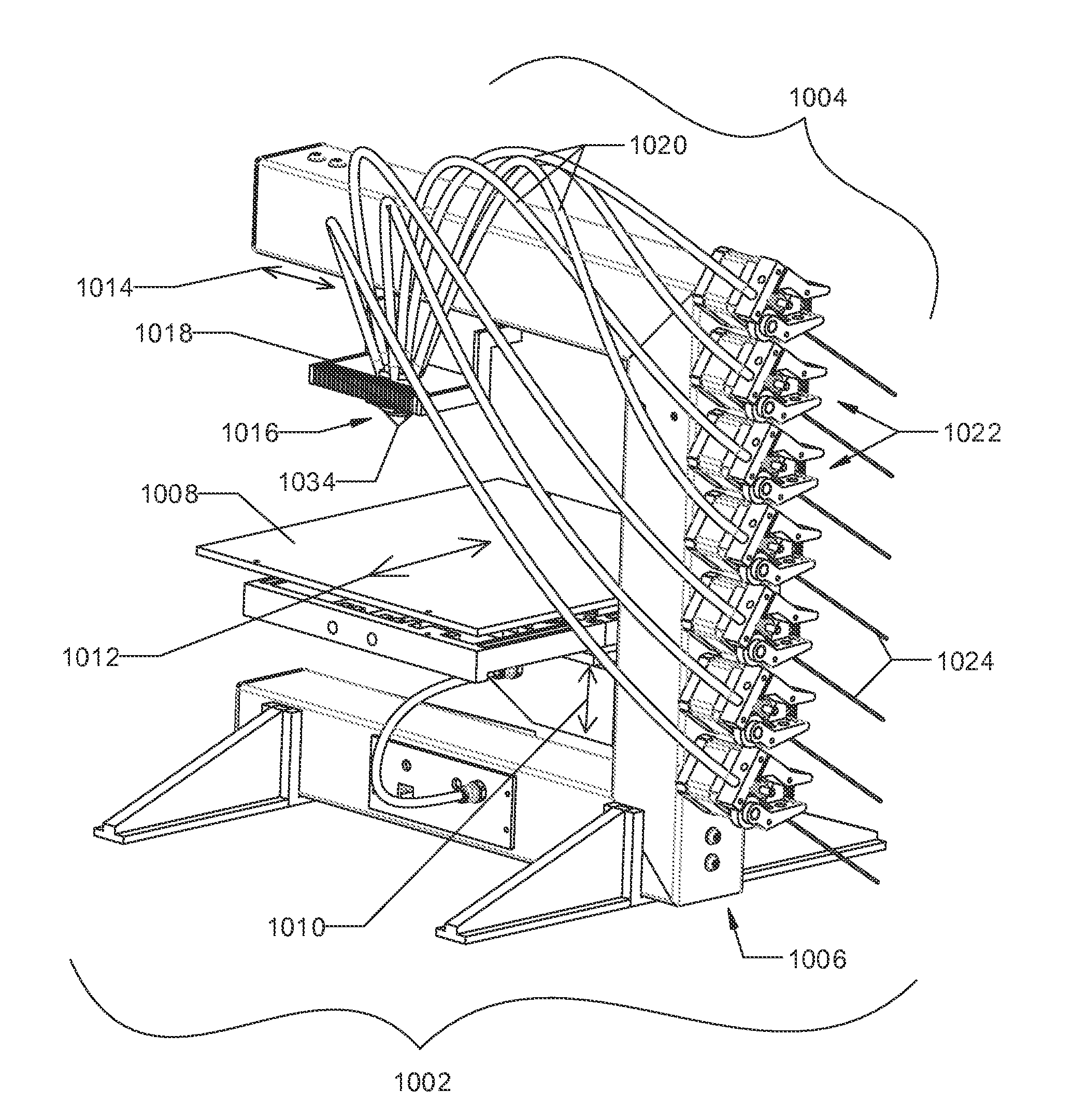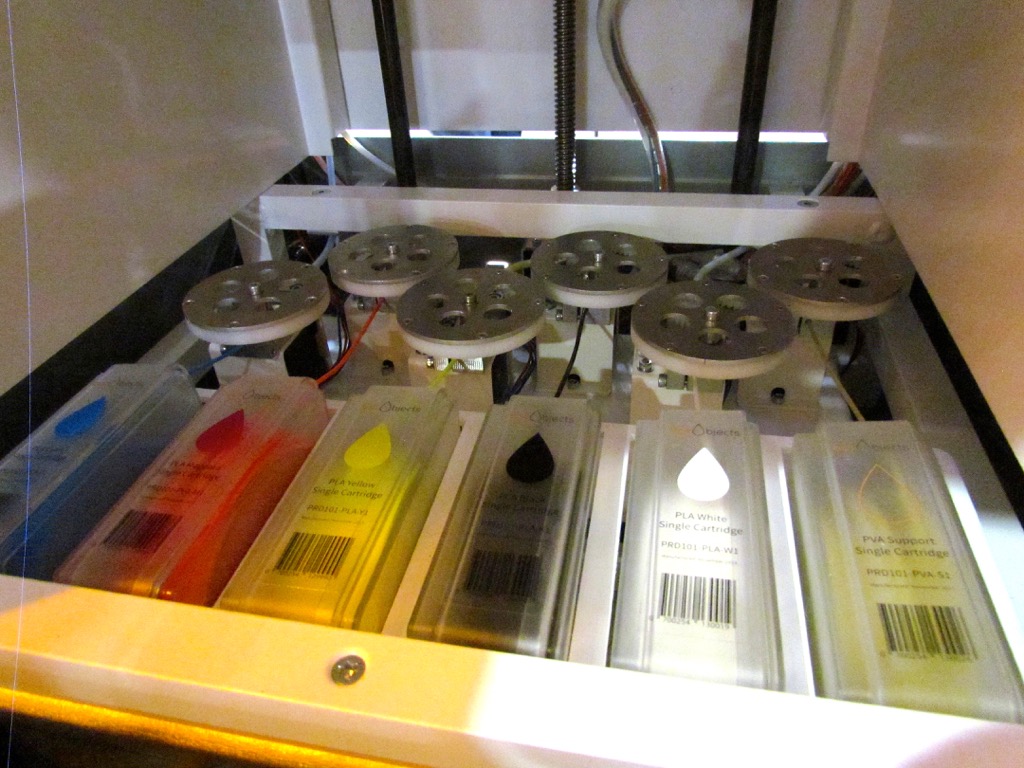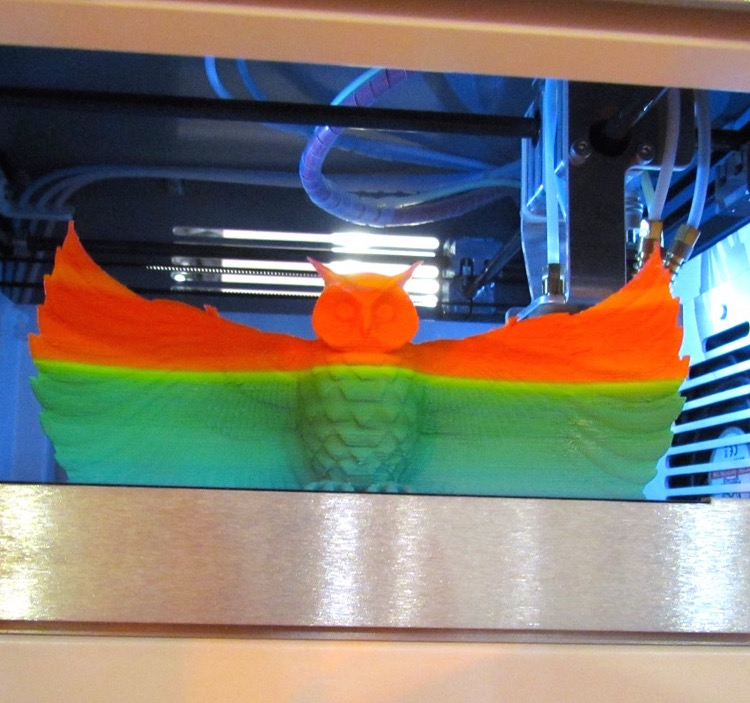US Patent Application 20150093465 recently filed by Autodesk describes a very strange 3D printing approach.
First, you might be wondering why Autodesk, a software company dedicated to producing 3D design tools, is patenting a hardware device. It’s because they believe in the future of 3D printing and have previously patented a reference design for a resin-based 3D printer, which they have provided to the public in an attempt to foster the further development of the technology. And subsequently this could generate more sales for their 3D software products. It makes sense.
But does their new patent make sense? Let’s take a look. As you can see in the image above of an overview of the new system, there are a number of filament paths leading to a common point.
This point is what they call the “mixing chamber”, in which different materials can be selectively fed. The abstract describes the process:
Additive manufacturing systems and apparatus include, in one aspect, a material deposition system including an extruder for deposition materials, the extruder including two or more material entry ports, a mixing chamber, and an exit orifice; and a controller coupled with the extruder to dynamically change delivery rates of the deposition materials to be mixed in the mixing chamber before flowing from the exit orifice; wherein the controller combines a desired volume flow rate of material to flow from the exit orifice with a mix ratio to specify the delivery rates of the deposition materials. The system can include filament drive systems to feed the thermoplastic materials in filament form into the entry ports, and the controller can dynamically change the mix ratio when operating the filament drive systems to control one or more properties of the material to flow from the exit orifice.
So this seems to be the same mixing approach attempted by several others in the past. We’re not sure how this is patentable, but that’s for other experts to decide.
In particular, this appears to be very similar to the BotObjects approach, where colors were mixed in a chamber, having been fed by multiple filaments. Take a look at this image of the interior of a BotObjects / CubePro C, which seems to look a lot like the Autodesk proposal.
BotObjects didn’t get very far with this approach, but they were subsequently purchased by 3D Systems, who believe they can make the mixing system work. For now, however, the only examples of color mixing we’ve seen from them are layer-based gradual color changes that are not particularly useful for producing color objects, as you can see in this sample:
We believe 3D Systems is working on specialized software to drive the mechanism in a more efficient manner that could make color switching more practical, however, they’ve had no such announcements yet.
Meanwhile, Autodesk is applying for a patent for pretty much the same thing? This should be an interesting story to follow.
Via Google Patents




